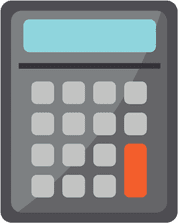You’re considering buying a deal with negative cash flow because you like the upside.
My first response is, “NO, don’t do it!”
This is because I view this as an advanced strategy and not for the faint of heart or the newbie.
However, sometimes there are good reasons to take on a negative cash flow property. For example, in Washington, DC investors are very successful with purchasing vacant apartment buildings, fixing them up and leasing them with Section 8 tenants. In the process they create value so that they can either refinance the building and hold it or they sell for a profit.
In order to take advantage of opportunities like these, you HAVE to take on negative cash flow.
If you’re considering a deal like this, proceed with caution, and then follow these four rules.
4 Rules for Buying a Negative Cash-Flow Property
Rule # 1: Accurately Model the Projections
Create a financial model that is able to model the income and expenses. You might have to create a monthly model that then rolls up into an annual one over the life of the investment.
As always, the overall return should drive the deal. The return is made up of cash flow, amortization and appreciation. Make sure your deal analyzer is able to calculate the overall return from each of these components.
Obviously, the negative cash flow will put downward pressure on the overall return, so make sure you can model it!
Rule # 2: Be Conservative in Your Projections!
Things always cost more and take longer than you expect. If you think it’ll take you 3 months to get all of the units rent-ready, then plan for 6. If you think it’ll take you 3 months to lease up the units, then double your estimate. If you think it’ll take you 12 months to achieve cash flow break-even, then give yourself a 6-month margin for error.
If the deal still works, you have a good deal! If it doesn’t, be very cautious.
Rule # 3: Be Confident About Your Business Plan
Make sure that you understand EXACTLY why the property is cash flow negative, and know EXACTLY what you need to do to fix it. This is not the time for guessing and hoping.
If the building is empty because of condition and neglect by the previous owner and the demand for housing is strong, then you can be confident in your plan to renovate and lease up.
On the other hand, if the building is 40% vacant and you’re not sure why (maybe the rental market is soft in that area), then be very cautious.
You need to have a high degree of confidence in your business plan.
Rule # 4: Have Enough Capital Reserves
Make sure you have enough capital reserves to handle the negative cash flow.
The challenge with negative cash flow situations is that there is a possibility of exhausting your cash. And if that happens you enter the downward spiral: you can’t finish the renovations, and so you can’t lease up the units. Then you can’t achieve the profitability and the valuation you were projecting. Worse, if running out of cash prevents you from achieving a cash-flow break-even, then you could lose the entire investment.
Re-visit Rule # 2 and then make sure you have enough cash to fund your conservative projections.
Conclusion
I would first try to talk you out of taking on a negative cash flow deal unless you’re already an experienced investor. However, sometimes the opportunity is so good that it would be foolish not to take advantage of it just because you might lose money for a few months.
In that case, make sure you can accurately model the scenario, be conservative in your projections, be confident about your plan, and make sure you have enough cash reserves.
Follow these four rules, and you can maximize your chances for success.
What are your thoughts about negative cash-flow deals? Why or why not would you take one on? If you’ve done one, what was the outcome?
Leave a comment below!
